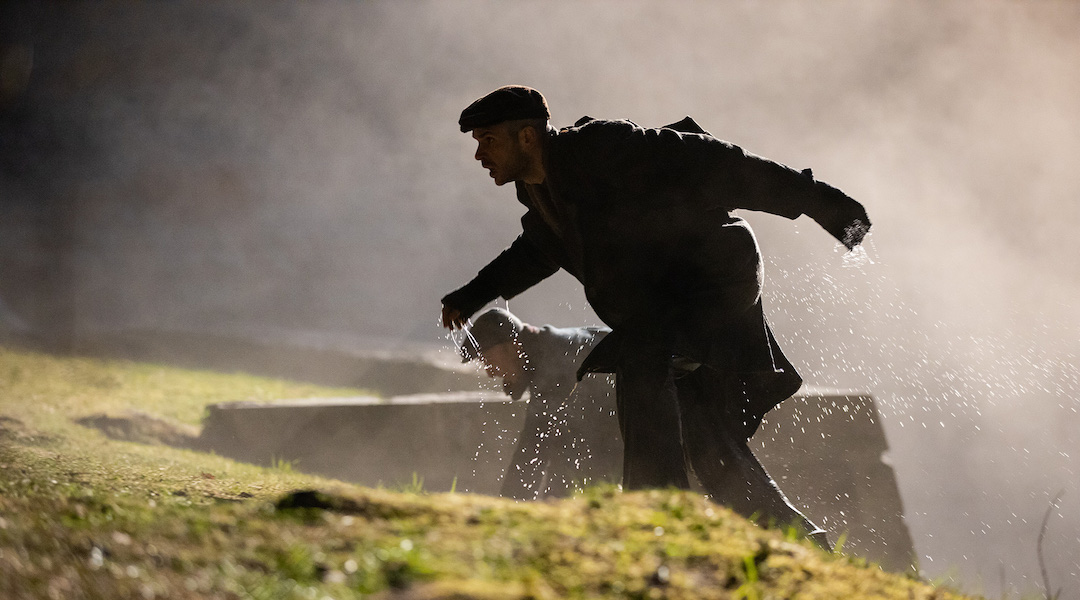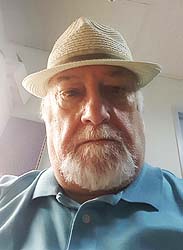 Okładki PRL-owskich kryminałów: ‘Strzał na dansingu (1975) Jerzego Edigeya i ‘Szukam tego człowieka’ (1979) Anny Kłodzińskiej (Fot. materiały prasowe)
Okładki PRL-owskich kryminałów: ‘Strzał na dansingu (1975) Jerzego Edigeya i ‘Szukam tego człowieka’ (1979) Anny Kłodzińskiej (Fot. materiały prasowe)
 Książki najgorsze. Kryminały w PRL charakteryzowały się grafomaństwem i wazeliniarstwem wobec władzy
Książki najgorsze. Kryminały w PRL charakteryzowały się grafomaństwem i wazeliniarstwem wobec władzy
Paweł Smoleński
Umiem sobie wyobrazić kryminał, w którym podwładny Jacka Kurskiego, niczym redaktor Maj, wyjaśnia, jak lewacki spisek wygnał z Białego Domu Trumpa
.
Wraz z latem naszła mnie chęć, by zamyślić się nad sensacją i kryminałem w wydaniu książkowym, filmowym i każdym innym. Osobliwie zaś nad polskoludową sensacją i kryminałem. I tak mi przyszło do głowy, że milenialsi – choć warczą, krzyczą i głoszą wszem i wobec, iż my, dziadygi, wszystko spieprzyliśmy – wiodą jednak anielskie życie. Jako że mają znikome szanse, by doświadczyć tego, co było moim udziałem. Na własną prośbę, lecz upatruję usprawiedliwienia w osobie tego, kto mnie do tak wyrafinowanego masochizmu skusił.
A był nim Stanisław Barańczak, poeta wielki, zamieszkały na najwyższym piętrze Parnasu, a może jeszcze większy tłumacz Szekspira i nie tylko; oceńcie sami. Barańczak wcielił się w duet autorski Trzymałko-Dzierżankiewicz. Opowiadał w sposób okrutny i złośliwy, nie zapominając wszakże o sprawiedliwości (z czego okrucieństwo i złośliwość wynikały), o książkach najgorszych (taki tytuł nosił wydany pod koniec lat 70. w drugim obiegu zbiór recenzji dzieł ilustrujących, że może istnieć bałwaństwo perfekcyjne). Tak oto zachęcił mnie do odkrywania źródeł swojego natchnienia.
Z treści tych książek autorstwa Anny Kłodzińskiej czy Jerzego Edigeya (mistrzów pióra ich klasy było znacznie więcej) prawie nic nie pamiętam. Prócz ogólnego klimatu wspierającego się na dwóch filarach: himalajach grafomanii, które winny być odnotowane w osobnym rozdziale Encyklopedii Britanniki, oraz nadzwyczajnym, cudownym i bezapelacyjnym wazeliniarstwie oraz służalczości wobec władzy. Kiedy Kłodzińska – za pieniądze wiadomych resortów – wychwalała pod niebiosa przymioty dziarskich oficerów Służby Bezpieczeństwa, serce czytelnika biło jak szalone w obliczu ich inteligencji, męskiej urody, wielkiego charakteru, zdolności dedukcyjnych oraz wierności ideałom realnego socjalizmu. Zaś po lekturze siłą rzeczy portretującej również paskudnych zbrodzieni, agentów obcych służb, polskich zdrajców, na dodatek obcych klasowo, moralny kręgosłup czytelnika sztywniał niczym stalowy pręt, twardszy niż stal z Huty Katowice.
Nie zdziwiło mnie więc, że takim wspominkom towarzyszył żal: dlaczego dzisiaj nie mamy tego, co się nam po prostu należy?
Umiem bowiem wyobrazić sobie książki, w których najbardziej zaufany agent obecnej władzy, po wyczerpującym, acz błyskotliwym śledztwie, często ryzykując życie, rozszyfrowuje tzw. układ, którego w realu do dzisiaj nie odkryto. Albo dzisiejszy podwładny Jacka Kurskiego – niczym hasający po wszystkich kontynentach telewizyjny redaktor Maj z kultowego „Życia na gorąco” (przypomnę, iż był wychowankiem Hansa Klossa, zaś jego wróg, doktor Gebhardt – samego Hermanna Brunnera) – wyjaśnia, jak lewacki spisek wygnał z Białego Domu Donalda Trumpa i czym Franciszek, papież, grzeszy przeciwko polskiemu Episkopatowi. Albo kto tak naprawdę stoi za Strajkiem Kobiet, bo przecież nie decyzje magister Przyłębskiej. I tak dalej.
Nie miałbym również trudności ze wskazaniem nazwisk kilku tuzinów pismaków, którzy – nawiązując do Kłodzińskiej i Edigeya – mogliby sobie fest dorobić.
Zważmy, jak takie książki ubogaciłyby nasze życie społeczne. Jak wzmocniłyby autorytet naszej policji. Jak dodawałyby blasku premierowi od bezpieczeństwa, ministrowi sprawiedliwości wraz z solidarnopolską drużyną hunwejbinów czy parze deblowej Kamiński/Wąsik z MSW i wszystkim innym nadzorcom polskich służb ścigających spiskowców, narodowych zaprzańców i szukających winy Tuska. Pomysł z konfetti rzucanym z helikoptera na byłego wiceszefa MSW Zielińskiego, tego od policji właśnie, był nadzwyczaj wyborny, lecz zblednie, kiedy właściwe czynniki państwowe wynajdą wreszcie literatów od sensacji RP trzy i pół.
Zyskałaby również szkolna dziatwa, gdyż bezapelacyjnie takie książki minister Czarnek wprowadziłby do kanonu lektur. Minister Gliński mógłby je hojnie dotować, zaś autorom wręczać nagrody pieniężne. Sądzę też, że Gliński dostałby pozycje, które przeczytałby z zaciekawieniem, jako że – wiemy to z jego ust – książki takiej Tokarczuk nudzą go do spodu. Czy zacząłby czytać poseł Suski? Nie wiem, ale przynajmniej dostałby szansę. I samo to warte jest największego wysiłku.
Paweł Smoleński – pisarz, publicysta, reporter „Gazety Wyborczej”
Zawartość publikowanych artykułów i materiałów nie reprezentuje poglądów ani opinii Reunion’68,
ani też webmastera Blogu Reunion’68, chyba ze jest to wyraźnie zaznaczone.
Twoje uwagi, linki, własne artykuły lub wiadomości prześlij na adres:
webmaster@reunion68.com




